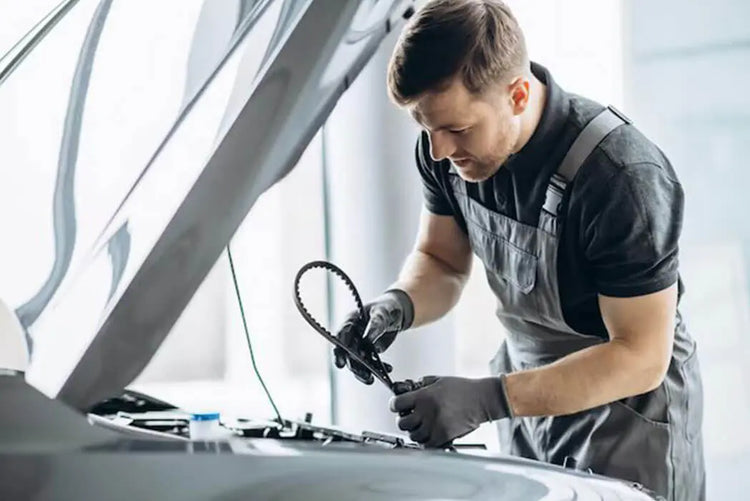Do You Know The Difference? TPMS Programming vs. Relearning

In the last five years, there has been more and more information regarding TPMS and its service.
Throughout GUTA blog posts, we always try to provide our customers with all the correct information. We focus on providing the best information regarding this new era of tire pressure. Yet, there is more to learn: TPMS programming vs relearning.
It is relevant to highlight that TPMS is a monitoring system that alerts you about your low tire pressure. Yet, programming a sensor to relearn a vehicle is a common mistake.
Let's get into it the details.
TPMS Programming

Programming a TPMS sensor is vital for any TPMS you purchase and add to your wheels. This means for all DIRECT TPMS sensors.
These sensors must be programmed since they come utterly blank from the box. The term programming can also be confused with activated. It would be best to program your TPMS with your vehicle's unique make, year, and model. If you do not do this step, you will install a device that will not transmit any signal to your monitor, plus the latter will alert you about a missing sensor.
To program your TPMS, we recommend you bring your car to your vehicle technician. Often supplementary tools are required to undertake the programming step.
You may have a programming tool within your set of tools. Yet, a software update is occasionally requested, which only a technician can conduct.
Multi-application TPMS sensors

A few multi-application sensors already have the necessary programming to function with different vehicles. Since they are pre-programmed, they reduce the time spent on programming and troubleshooting programming, even cloning issues.
Our GUTA sensors are all pre-programmed, making it easier for you to install to your vehicle. Additionally, it helps make TPMS service more profitable. Plus, it reduces customer complaints and comebacks.
TPMS Relearning
They need to go through the relearning procedure whenever you switch or replace a TPMS sensor. This process is mandatory to ensure the TPMS system works appropriately. Plus, if the process of relearning is done, it guarantees the vehicle's complete TPMS system functions appropriately.
Relearn goes together with programming. After your sensor has been programmed, your car needs to relearn it. This step is mandatory in every TPMS you are programming. Without the relearn, there is no proper monitoring.
Methods of TPMS Relearning

The first necessary step of performing a relearn is to decipher which type of relearn procedure needs to be completed on that specific vehicle. There are three types of relearning systems: stationary (manual), OBD, or automatic.
There are exceptional cases in which you will need a combination of these three in order to complete the relearn.
Stationary or Manual
It involves activating the vehicle's TPMS relearn mode by performing a sequence specific to the vehicle's year, make, and model.
These sequences include turning the critical several times, stepping on the brake pedal, or a combination of actions that activate the relearn mode.
Once your vehicle is in relearn mode, every sensor must be triggered in order, and the TPMS programming tool.
This allows the sensors to communicate with the vehicle, learn the sensor ID, and in some systems, the sensor's location. For instance: the passenger side front.
If the sequence is completed correctly, the vehicle will give an alert by flashing a light, chirping the horn, or other notifications.
OBD
With this method, you must write the sensor code to the vehicle's computer via the OBD port.
In this procedure, you need to scan the sensors to use your TPMS scan tool. Once this step is done, you need to connect all the sensors to the vehicle's OBD tool. Afterward, place the computer on TPMS learn mode to complete the process.
Automatic Relearn
Nowadays, many vehicles are equipped with an auto relearn feature. This feature learns and detects the ID and location of the sensor just by driving the car for a determined amount of time.
In some opportunities, some cars are equipped with an automatic learning mode. Additionally, if starting a new sensor, we highly recommend you still perform an OBD relearn. If you do this, you will ensure the sensor appropriately communicates with the computer.
Difference Between Relearning vs. Programming

The relearning process vs. the programming one is entirely different. However, they are linked. We have explained that there is no guarantee that your TPMS works efficiently if it is programmed but not placed in relearning mode.
To make this terminology easier, you can program a TPMS. Some come pre-programmed. After they have been programmed, you need your car to relearn each sensor. The same process takes place when you need to relearn your TPMS. Ensure it is programmed for your vehicle to be aware of it.
Why is Servicing Your TPMS So Important?

Since 2014 all vehicles in the US have been legally required to have TPMS installed. This law stands for personal cars and tow vehicles. T you need to add these sensors to every automobile you own.
By doing this, you probably need to purchase several sensors, program, and relearn each tire to your main vehicle.
Servicing your TPMS is vital for its performance. Since relearning takes time and you will require to invest in a technician, consider maintaining properly. You can read this article if you need to replace your TPMS.
Final Thoughts On This Subject
Whether you are a car affectionate or a car shop owner, it is relevant that you know how this new system works. By offering a service with TPMS, you need to properly train your staff to distinguish programming from relearning.
The purpose of both is the same, but the procedure varies, and here is where the challenge appears. Being aware that every sensor has its ID associated with each wheel. When a tire is replaced, rotated, or even changed, there is a process that needs to undergo.
Without both properly performed, the TPMS light will remain illuminated after service.
